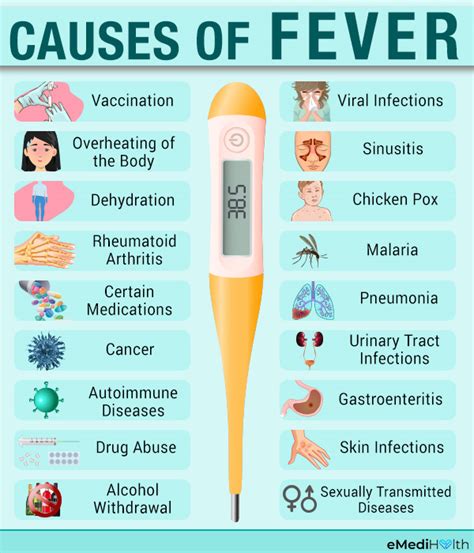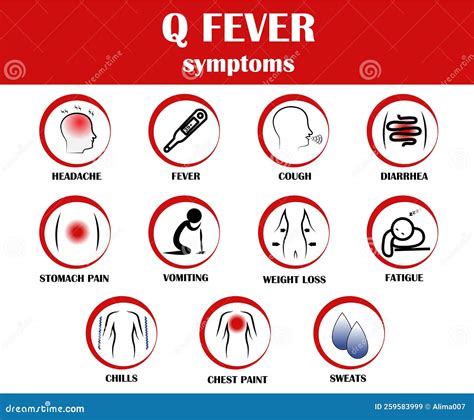Intro
Learn about fever in adults with 104 temperature, including causes, symptoms, and treatment options, to manage high body temperature and prevent complications like dehydration and seizures.
Having a fever can be a concerning and uncomfortable experience, especially when it reaches a high temperature of 104 degrees Fahrenheit. Fevers are a common symptom of many illnesses, and it's essential to understand what causes them, how to manage them, and when to seek medical attention. In this article, we'll delve into the world of fevers, exploring their causes, symptoms, and treatment options, as well as providing valuable insights and practical advice for adults experiencing a fever of 104 degrees.
A fever is a natural response of the body's immune system to an infection or inflammation. When the body detects the presence of a foreign substance, such as a virus or bacteria, it releases chemicals that trigger a rise in body temperature. This increased temperature helps to create an environment that's less conducive to the growth and multiplication of the invading organism, giving the body's immune system a chance to fight off the infection. Fevers can be caused by a wide range of factors, including viral or bacterial infections, autoimmune disorders, and even certain types of cancer.
In adults, a fever is typically defined as a body temperature above 100.4 degrees Fahrenheit. However, a temperature of 104 degrees is considered high and may require medical attention. It's essential to monitor the fever closely and seek medical help if it persists or is accompanied by other severe symptoms, such as difficulty breathing, chest pain, or severe headache.
Understanding Fever Causes

There are many potential causes of fever in adults, including respiratory tract infections, such as pneumonia or bronchitis, urinary tract infections, and gastrointestinal infections, such as food poisoning or appendicitis. Other possible causes include skin infections, such as cellulitis or abscesses, and infections of the central nervous system, such as meningitis or encephalitis. In some cases, fever can be a symptom of a more serious underlying condition, such as sepsis or septic shock, which requires immediate medical attention.
Fever Symptoms and Diagnosis
In addition to a high body temperature, other common symptoms of fever include chills, sweating, headache, muscle aches, and fatigue. In some cases, fever can also cause confusion, disorientation, or loss of appetite. To diagnose the underlying cause of a fever, a healthcare professional will typically perform a physical examination, take a medical history, and order diagnostic tests, such as blood work or imaging studies.Managing Fever Symptoms

There are several ways to manage fever symptoms and reduce discomfort. Staying hydrated by drinking plenty of fluids, such as water, clear broth, or electrolyte-rich beverages, is essential. Resting and avoiding strenuous activities can also help the body recover from the underlying infection. Over-the-counter medications, such as acetaminophen or ibuprofen, can help reduce fever and alleviate headaches and muscle aches. However, it's essential to follow the recommended dosage instructions and consult with a healthcare professional before taking any medication.
Treatment Options for Fever
The treatment for fever depends on the underlying cause. For example, if the fever is caused by a bacterial infection, antibiotics may be prescribed. For viral infections, treatment typically focuses on relieving symptoms and supporting the body's immune system. In some cases, hospitalization may be necessary to provide close monitoring and supportive care. It's essential to work closely with a healthcare professional to determine the best course of treatment and ensure a speedy recovery.When to Seek Medical Attention

While most fevers can be managed at home, there are certain situations that require immediate medical attention. If the fever is extremely high (above 103 degrees Fahrenheit), or if it's accompanied by severe symptoms, such as difficulty breathing, chest pain, or severe headache, seek medical help right away. Additionally, if the fever is caused by a serious underlying condition, such as sepsis or meningitis, prompt medical attention is essential.
Preventing Fever
While it's not always possible to prevent fever, there are steps that can be taken to reduce the risk of illness. Practicing good hygiene, such as washing hands frequently, avoiding close contact with people who are sick, and getting vaccinated against common illnesses, can help prevent the spread of infection. Maintaining a healthy lifestyle, including a balanced diet, regular exercise, and adequate sleep, can also help support the immune system and reduce the risk of illness.Fever in Adults: A Summary

In summary, fever is a common symptom of many illnesses, and it's essential to understand its causes, symptoms, and treatment options. By staying informed and taking proactive steps to manage fever symptoms, adults can reduce discomfort and support their body's immune system. Remember to seek medical attention if the fever is extremely high or accompanied by severe symptoms, and work closely with a healthcare professional to determine the best course of treatment.
Key Takeaways
Here are the key takeaways from this article: * Fever is a natural response of the body's immune system to an infection or inflammation. * A temperature of 104 degrees is considered high and may require medical attention. * There are many potential causes of fever in adults, including respiratory tract infections, urinary tract infections, and gastrointestinal infections. * Managing fever symptoms includes staying hydrated, resting, and taking over-the-counter medications as directed. * Seeking medical attention is essential if the fever is extremely high or accompanied by severe symptoms.Final Thoughts

Having a fever can be a challenging and uncomfortable experience, but by staying informed and taking proactive steps, adults can reduce discomfort and support their body's immune system. Remember to prioritize your health and seek medical attention if you're experiencing a high fever or severe symptoms. By working together with healthcare professionals and taking a proactive approach to health, we can reduce the risk of illness and promote overall well-being.
What is the normal body temperature range for adults?
+The normal body temperature range for adults is between 97.7 and 99.5 degrees Fahrenheit.
What are the most common causes of fever in adults?
+The most common causes of fever in adults include respiratory tract infections, urinary tract infections, and gastrointestinal infections.
When should I seek medical attention for a fever?
+You should seek medical attention if your fever is extremely high (above 103 degrees Fahrenheit), or if it's accompanied by severe symptoms, such as difficulty breathing, chest pain, or severe headache.
We hope this article has provided valuable insights and practical advice for adults experiencing a fever of 104 degrees. If you have any further questions or concerns, please don't hesitate to reach out to a healthcare professional. Remember to prioritize your health and take proactive steps to manage fever symptoms and support your body's immune system. Share this article with friends and family to help spread awareness and promote overall well-being.
